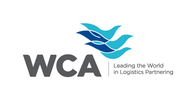

CB32u—Processing Additional Duties and/or Quotas Imposed by Section 232 of the Trade Expansion Act of 1962
Subscriber price: $34.00, Non-subscriber price: $50.00
Estimated total study time: 3 hours 53 minutes
![]()
This course is for those interested in the additional duties on Steel Mill and Aluminum products subject to Section 232 of the Trade Act of 1974. It addresses practical operational issues, the consequences of failure to add the additional tariff line item and duty when applicable, importer bond sufficiency, and where to obtain additional information as further developments arise.
Section 232 Safeguards. Purpose and Regulations
This lesson explores the Trade Expansion Act of 1962, with a particular focus on Section 232, which was enacted during the Cold War to address national security concerns. Section 232 tariffs are designed to protect strategic industries essential to national security by imposing additional duties or quotas on imports. The lesson covers the historical context, the investigation process, and the implementation of Section 232 remedies, including recent applications to steel and aluminum imports.
(Estimated study time: 55 minutes)
- Introduction
- Background of Section 232 Safeguards
- Laws and Regulations Pertaining to Section 232 of the Trade Expansion Act of 1962
- Investigation of National Security Issue for Treatment as Section 232
Notification of Trade Legislation and General Entry Processing Information Regarding Section 232
Section 232 of the Trade Expansion Act of 1962 grants the President of the United States the authority to adjust imports if they are deemed to threaten national security. This can involve imposing tariffs, quotas, or other trade restrictions. The process begins with an investigation by the Department of Commerce, which then reports its findings to the President. If action is deemed necessary, the President has 90 days to decide and 15 days to implement the action. The determination is published in the Federal Register and reported to Congress.
(Estimated study time: 36 minutes)
- Introduction
- Notification to the Public of Trade Legislation for Section 232
- 9903 U.S. Notes
- Consult any Filing Instructions, Chapter or Subchapter Notes
- General Entry Filing Using Chapter 99
- When Quota Applies to Goods in Chapter 99
Section 232 Exclusions and Entry Filing Using Chapter 99
This lesson focuses on the procedures for submitting exclusion requests under Section 232 tariffs, which are imposed due to national security concerns. It covers the criteria for exclusion, the submission process, and the steps involved in handling objections and denials. The lesson also provides guidance on the notification of trade legislation and entry processing information related to Section 232.
(Estimated study time: 56 minutes)
- Introduction
- Specific Tips for Entry Filing of Section 232 Goods
- Section 232 Duties Determined by Country and Date
- Aluminum, Steel, and Derivative Articles
- From All Countries except the U.K.and Russia
- When the Country or Value is Unknown for Aluminum, Copper or Steel
- Semi-finished Copper and Derivative Products
- Automobiles and Automobile Parts
- Aircraft and Aircraft Parts
- Medium- and Heavy-duty Trucks, Medium- and Heavy-duty Truck Parts and Buses
- Wood and Derivative wood Products
- Aluminum, Steel, and Derivative Articles
- Duty Drawback and Duty Deferral for Section 232
- HTSUS Headings that Apply to Section 232 Goods
- Trade Agreements and Trade Preference Programs for Section 232
- HTSUS Chapter 98 and Section 232
- Foreign Trade Zone's and Section 232
- Exclusions from Section 232
- ACE Reports for Section 232
- Section 232 Duties Determined by Country and Date
General Tariff Classification, Post Entry and Other Considerations for Chapter 99
This lesson begins with detailed instructions on handling multiple HTSUS classifications on the same entry summary line when Chapter 98 or 99 is required. The rest of the lesson focuses on the procedures and best practices for handling U.S. Customs and Border Protection (CBP) rejects due to inaccurate classification or information in Chapter 99 of the Harmonized Tariff Schedule of the United States (HTSUS). It covers the common reject messages received by Automated Broker Interface (ABI) filers, the steps to correct and resubmit entries, and proactive measures to avoid such rejections. Additionally, the lesson addresses bond sufficiency considerations and customs broker billing practices for shipments subject to additional duties.
(Estimated study time: 1 hour 27 minutes)
- Introduction
- Reporting Multiple HTSUS classifications on the Same Entry Summary Line
- When Multiple Classifications on a Single Line Include Chapter 98 or 99
- Stacking of Certain Additional Duties
- GUIDANCE
- APPLICABILITY
- REPORTING
- EFFECTIVE DATE
- REFUNDS OF PREVIOUS DUTY PAYMENTS
- EXAMPLES
- CBP Rejects for Inaccurate Classification or Product Information in Chapter 99
- Post Entry for Goods in Chapter 99
- Bond Sufficiency for Products with Additional Duties
- Customs Broker Billing and Payment Considerations for Shipments with Additional Duty
- Proactive Recommendations When Clients May Be Affected by Temporary Import Legislation